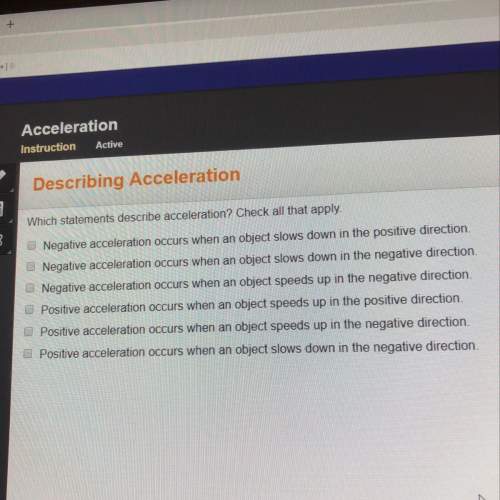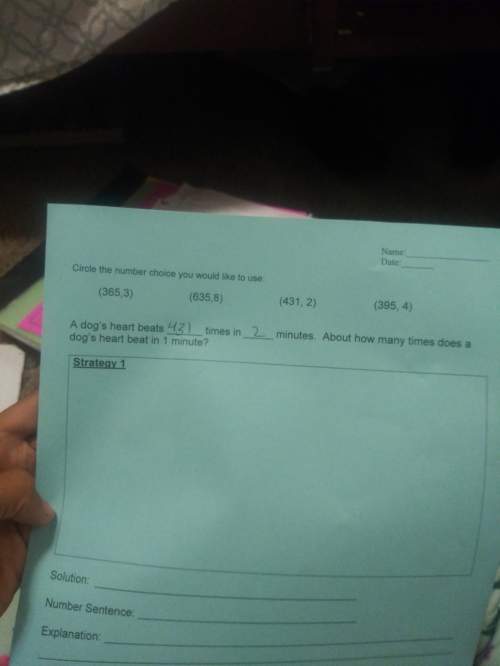
Physics, 21.04.2020 15:34 notseansafe
A 1.0-kg standard cart A collides with a 0.10-kg cart B. The x component of the velocity of cart A is +0.70 m/s before the collision and +0.50 m/s after the collision. Cart B is initially traveling toward cart A at 0.40 m/s , and after the collision the x component of its velocity is +1.6 m/s .
Part A: What is the x component of the change in the momentum of A?
Part B: What is the x component of the change in the momentum of B?
Part C: What is the sum of these two x components of the changes in momentum?

Answers: 3


Another question on Physics

Physics, 21.06.2019 21:50
Apossible explanation for a set of facts that can be tested by further investigation is called
Answers: 1

Physics, 22.06.2019 02:00
Chapter 23, problem 075 the figure shows a geiger counter, a device used to detect ionizing radiation (radiation that causes ionization of atoms). the counter consists of a thin, positively charged central wire surrounded by a concentric, circular, conducting cylindrical shell with an equal negative charge. thus, a strong radial electric field is set up inside the shell. the shell contains a low-pressure inert gas. a particle of radiation entering the device through the shell wall ionizes a few of the gas atoms. the resulting free electrons (e) are drawn to the positive wire. however, the electric field is so intense that, between collisions with gas atoms, the free electrons gain energy sufficient to ionize these atoms also. more free electrons are thereby created, and the process is repeated until the electrons reach the wire. the resulting "avalanche" of electrons is collected by the wire, generating a signal that is used to record the passage of the original particle of radiation. suppose the radius of the central wire is 24 âµm, the inner radius of the shell 2.3 cm, and the length of the shell 14 cm. if the electric field at the shell's inner wall is 2.8 ă— 104 n/c, what is the total positive charge on the central wire?
Answers: 1

Physics, 22.06.2019 07:30
Tall pacific coast redwood trees can reach heights of about 100 m. if air drag is negligibly small, how fast is a sequola cone moving when it reaches the ground f it dropped from the top of a 100 m tree?
Answers: 1

Physics, 22.06.2019 11:00
Which of the following are guidelines to follow for obtaining accurate observations
Answers: 2
You know the right answer?
A 1.0-kg standard cart A collides with a 0.10-kg cart B. The x component of the velocity of cart A i...
Questions

Mathematics, 13.05.2021 17:50

Health, 13.05.2021 17:50





Mathematics, 13.05.2021 17:50

English, 13.05.2021 17:50




Mathematics, 13.05.2021 17:50



Health, 13.05.2021 17:50

Mathematics, 13.05.2021 17:50

Biology, 13.05.2021 17:50

Mathematics, 13.05.2021 17:50

Mathematics, 13.05.2021 17:50





